13W - 22W

A copy was provided by Devolver Digital for review. Thank you!
There are games that have really stunned me in the ways they allow you to manipulate the world. I first really noticed this with Superliminal, where to solve puzzles, you had to manipulate objects in unique ways and cut out parts of the world. Viewfinder is another great one, where the photos you took could be used to add new structures to the level in front of you. The Plucky Squire is another one of these games, all wrapped in a lighthearted cartoon book where things go awry, and it has been one of the most interesting experiences I have had this year.
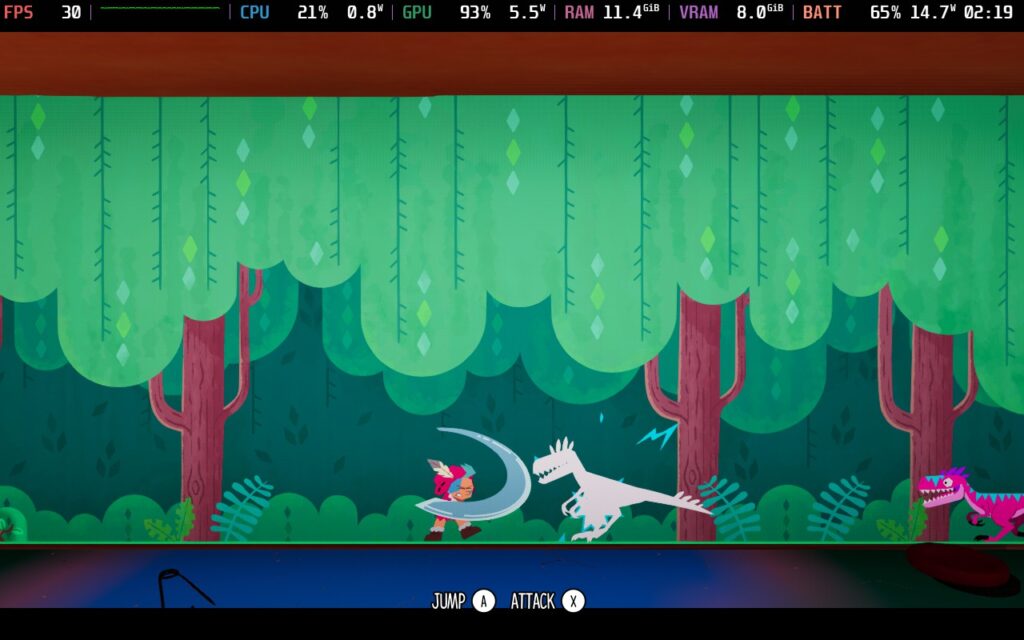
Throughout the game, you play as Jot, or The Plucky Squire. You are a hero of the land and have written about your experiences in popular books, so everyone knows of your exploits. In a quest to help your wizard friend Moonbeard, you encounter the evil Wizard Humgrump, who has discovered a book that allows him to manipulate the storybook that you live in! Now, you will have to go inside and outside of the book to stop him from changing the story the way he wants to.
The story itself is pretty standard and exactly what I would expect in a stereotypical children's tale about a hero saving the world, but the way it's told elevates it further than you'd expect. The fourth-wall breaks due to Jot coming in and out of the book and into the real world are a joy and help get through some of the more obvious story elements like everyone trusting Jot even when they don't know him. There are some twists here and there, but I didn't find anything completely unpredictable within the story itself. it was a fun time to see how everyone interacted and how Jot was going to try to save the world.
While the story may be more calm, the visuals and gameplay take it up a notch. The game takes place in two parts: A 2D world where you play through the storybook and a 3D world that represents the real world. Each world is colorful and has a distinct style, even when the themes remain the same. The 2D levels are masterfully drawn and have an adorable art style that is hard to avoid. I loved just running through the levels to see how they and the characters are all designed. It's such an appealing style that is hard not to be enchanted by.
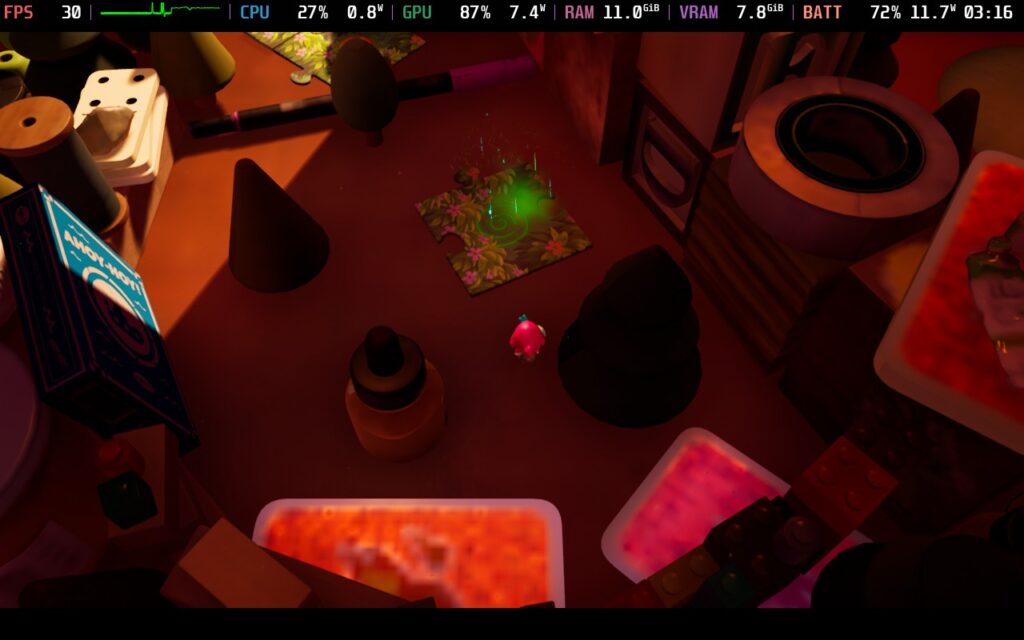
The 3D world has a more realistic style, but it is still filled with objects and great lighting that fit the game's theme. The game takes place on the desk of a child named Sam, so there are tons of different toys, blocks, stickers, paints, dolls, and books scattered around to jump around on. It doesn't have the same distinct style as the 2D levels, but it still fits the purpose and looks gorgeous in its way. It's so cool to switch between the two styles so seamlessly and have them interact in numerous ways, elevating how the entire game is presented.
The gameplay will be more familiar if you have played the classic Legend of Zelda games. You walk through levels, solving puzzles and slashing enemies. As you do, you will gain little lightbulb currency that you can use at shops to get new attacks, like the sword throw and spin attack, and upgrade them. The combat is pretty standard, as is this type of progression. It gets the job done and never gets too stale, but it isn't super engaging.
However, the puzzles are the polar opposite. You will have to think outside the box to keep progressing and solve the problems. Some may require switching out words on the page to modify objects, while others may have you go outside the book to gather items. But it doesn't end there. As you play, you will get new tools to actually manipulate the book in different ways. You can turn pages backward to previous areas to get items/words to solve your current problem, tilt the book to make objects move, and even create bombs to blow up some larger objects. The way you interact with the book to solve these is fantastic.
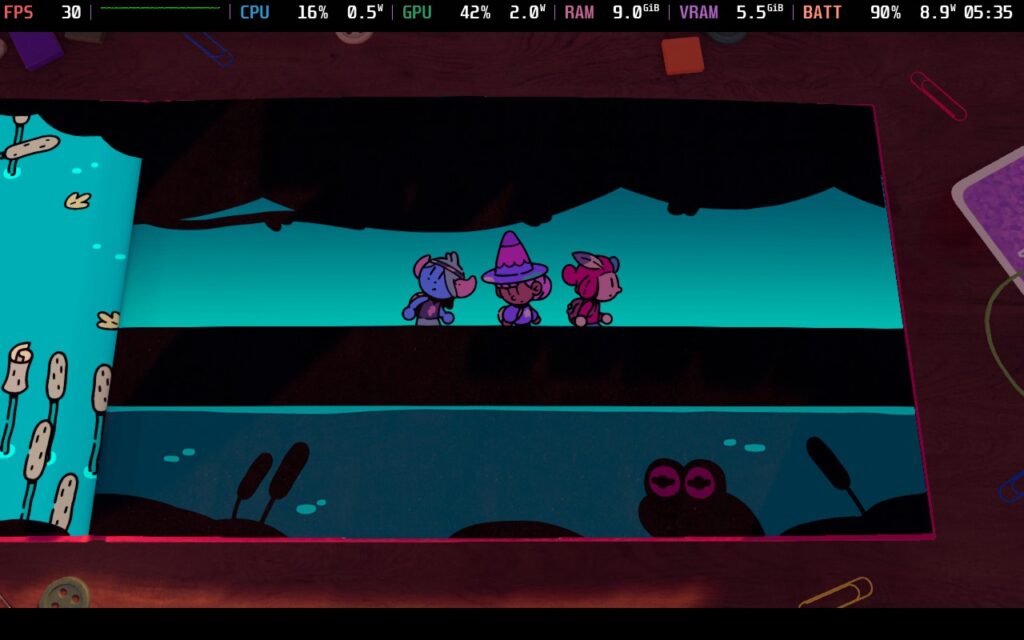
The Plucky Squire also has a plethora of mini-games to experience as you play. There are different mini-games inspired by games like Punch-Out and Crypt of the Necrodancer, while also having some unique ones like catching a fish mid-air or flying around and shooting spaceships with a laser gun. These are great ways to take breaks from the normal gameplay, and there's such a variety that it's awesome to try each one.
The bulk of these puzzles take place in the 2D world. The 3D world doesn't have as many puzzles and instead focuses on combat and sneaking around enemies. There are parts in the 3D world where you will have to go into independent 2D strips of artwork, which is awesome and may require some puzzle-solving within those strips. There are also some collectibles you can get to complete 100% of the game. There is artwork for a gallery that you can find, and you can gather little animals called Glitchbirds.
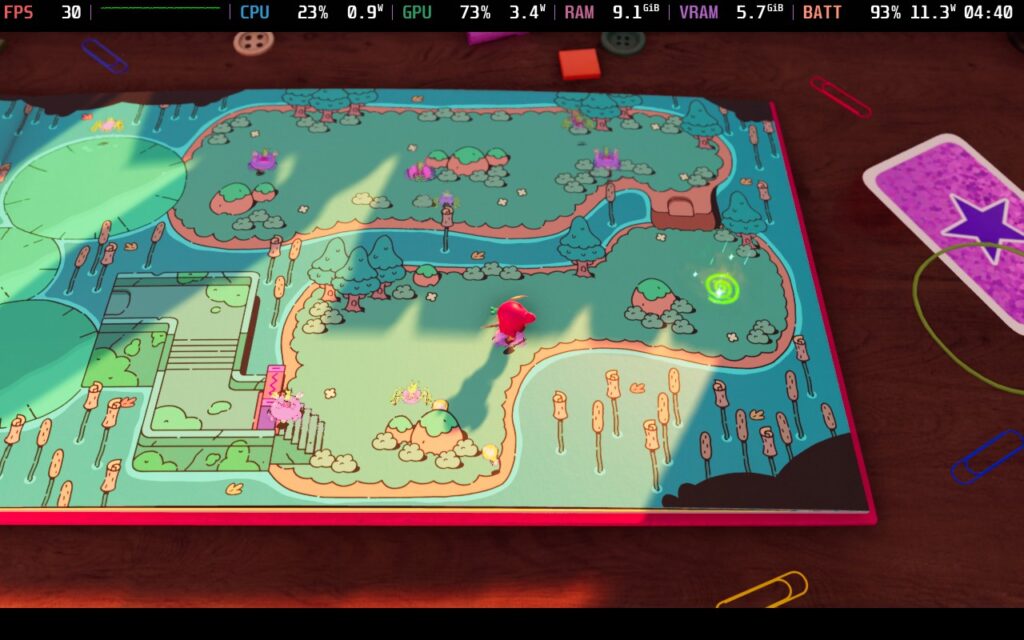
It all blends together into an experience worth experiencing, even with the compromises it needs on the Steam Deck.
The Plucky Squire is a phenomenal game, and while it is playable on the Steam Deck, there are areas where it could be better. Because this is a 2D and 3D game, there are moments where it runs extremely well, usually in the 2D areas, and some that drop heavily, taking place in the 3D areas. The game is decently optimized, and I do have three different groups of settings because of it, but there will be compromises for each one.
Regardless of the settings, there are a couple of points after Chapter 6 of the game where RAM spikes up out of nowhere, and there really isn't a discernable reason why. The only way I found to get past this is by setting the Texture quality to High, which sees the game stutter for a moment at these points instead of slowing to a crawl permanently. This does make some objects in the 3D world blurry, which can take out the immersion in some ways, but it means we can play through the game without insane slowdowns to 0-1 FPS, and I much prefer that. I also found that Proton Experimental helped a bit as well, but this could be a coincidence and may work with stable or Proton GE.
Otherwise, it will be pretty smooth sailing going forward.
Choosing my favorite way to play was hard, and it came down to minor details that made the quality settings win over the framerate settings. The world of The Plucky Squire really is beautiful, and being able to see everything in all of its glory is well worth the sacrifices we will need for framerate. We can keep almost every setting at "Epic" quality outside of Textures and Effects. This leaves us with a beautiful image and a mostly stable 30.
There are some parts in the later chapters that may quickly dip down to 28 FPS, but this doesn't happen for long, and you can't really feel it unless you see the numbers. The battery drain will also fluctuate a bit, going from as low as 10W in some 2D areas (looking at your Chapter 7) to highs of 21W. Because of this, we do need to keep TDP unlocked, but it stays lower than it does higher, so I would say you can expect longer battery life than you think.
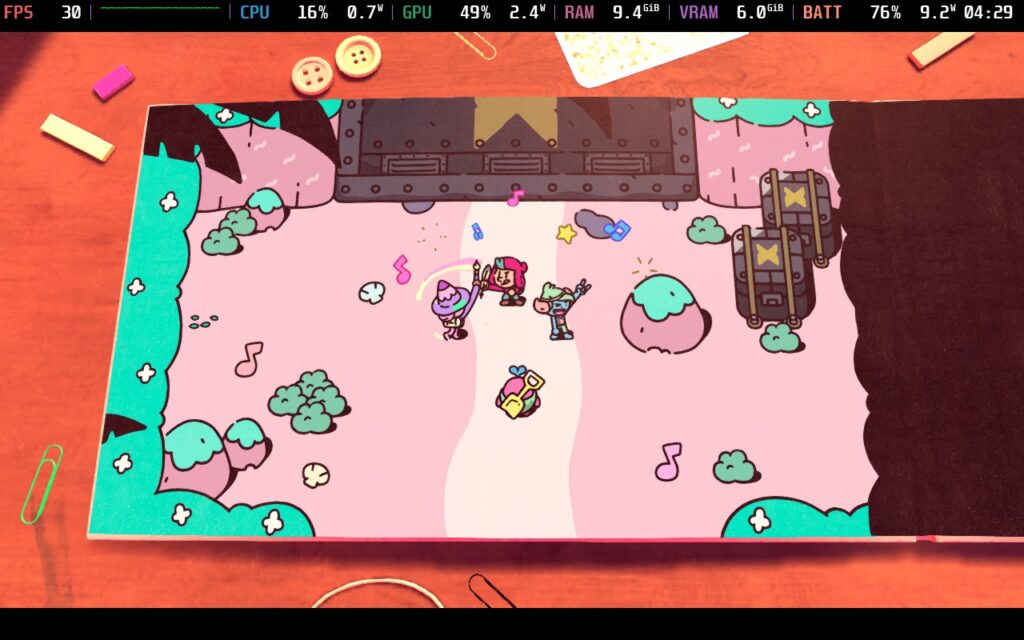
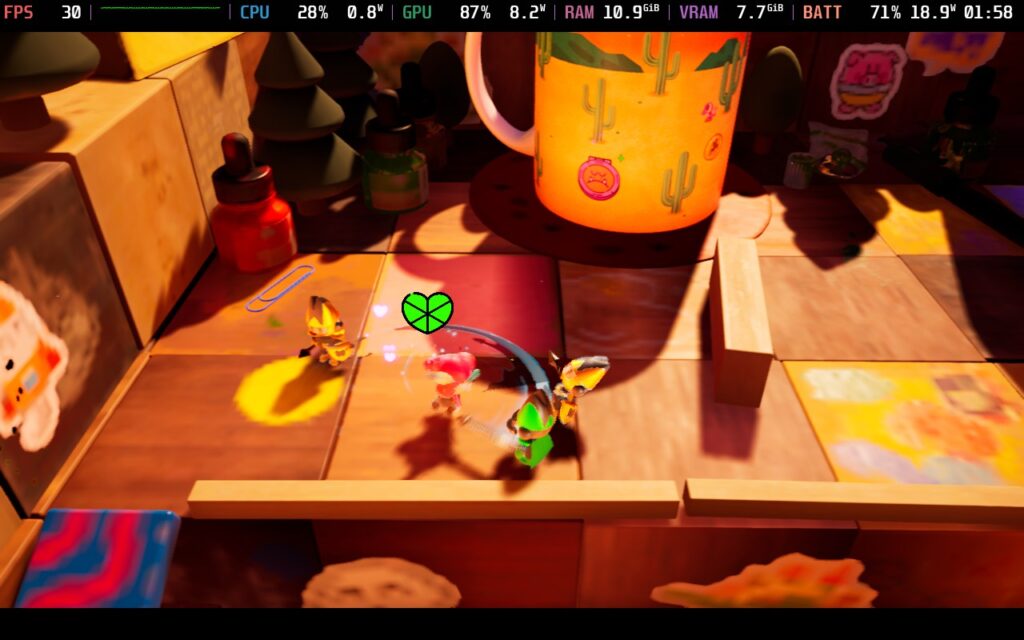
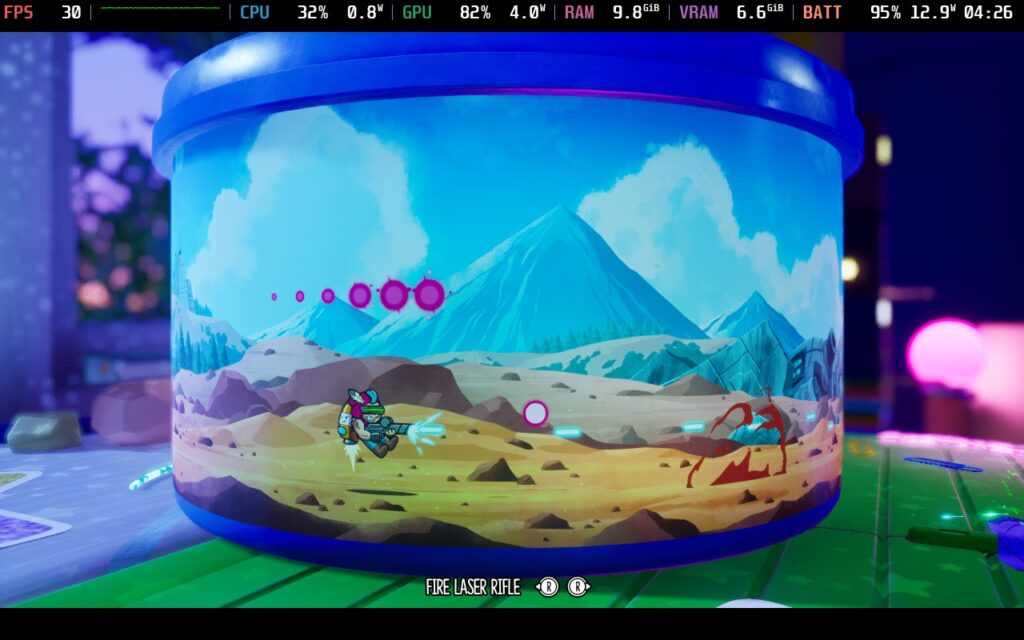
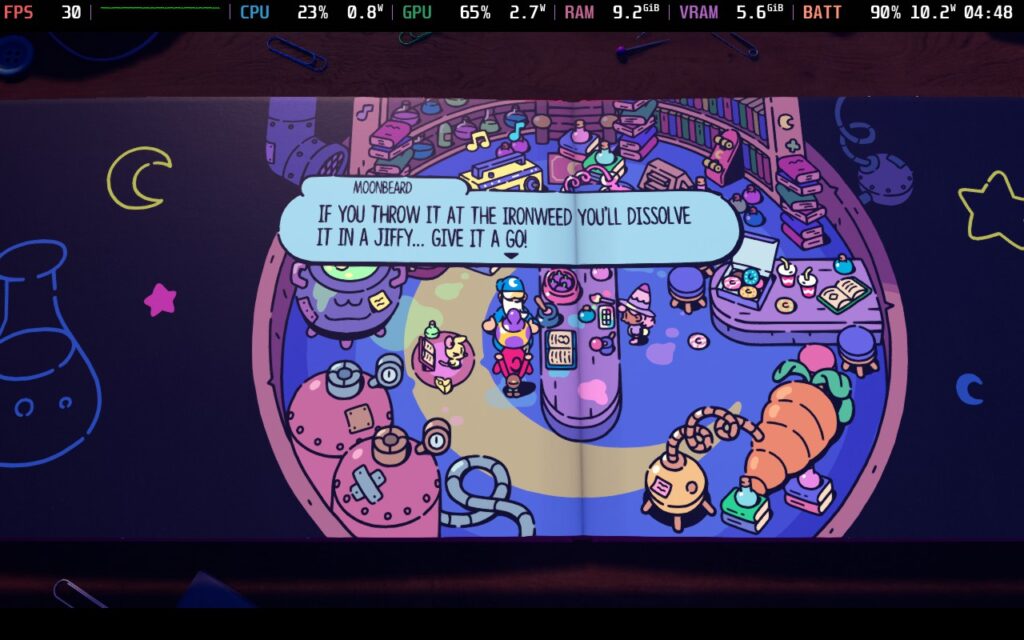
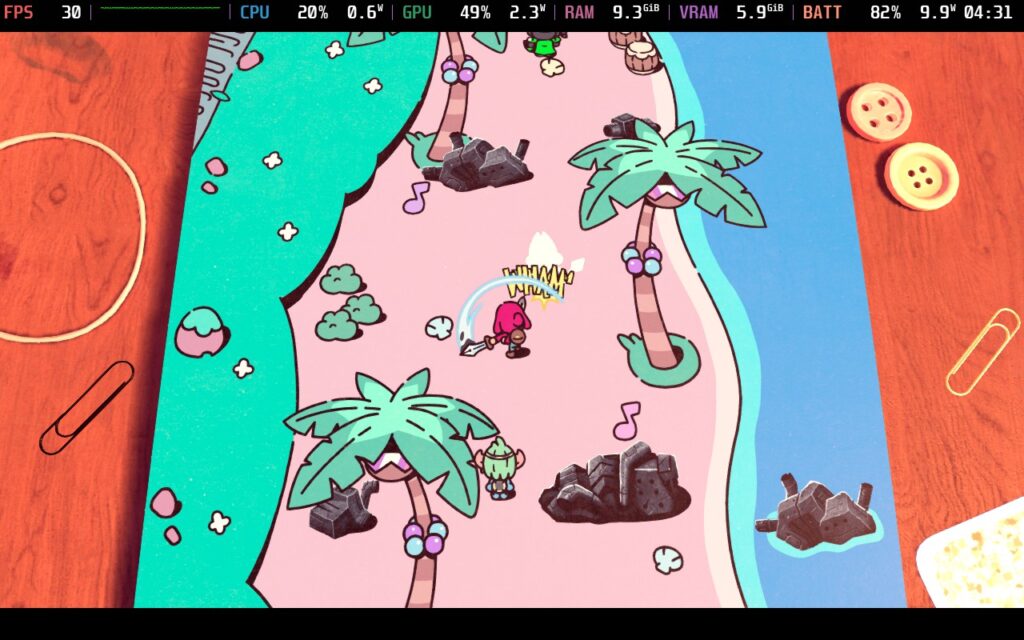
This was a close second for the recommended slot, and I still loved playing this way. With lowered quality settings, most of them to Medium, and a resolution scale set to 85%, we can get a solid 45 FPS throughout most of the game. There will be little hitches here and there, but these are far and few and 45 will hold 99% of the time. It doesn't look as great as the quality settings do, nor does it have the best battery life, but it feels significantly smoother and it's amazing.
I did try getting the game to hit 60 FPS, and even with all settings on the lowest and resolution scale at 10%, it still couldn't hit a solid 60. 2D areas were never the issue, but the more polluted sections of the 3D areas are going to be trouble. This means the max we can do is 55 at the lowest, but since it would make the game look horrible, I recommend just going to 45 so we can keep the game looking decent.
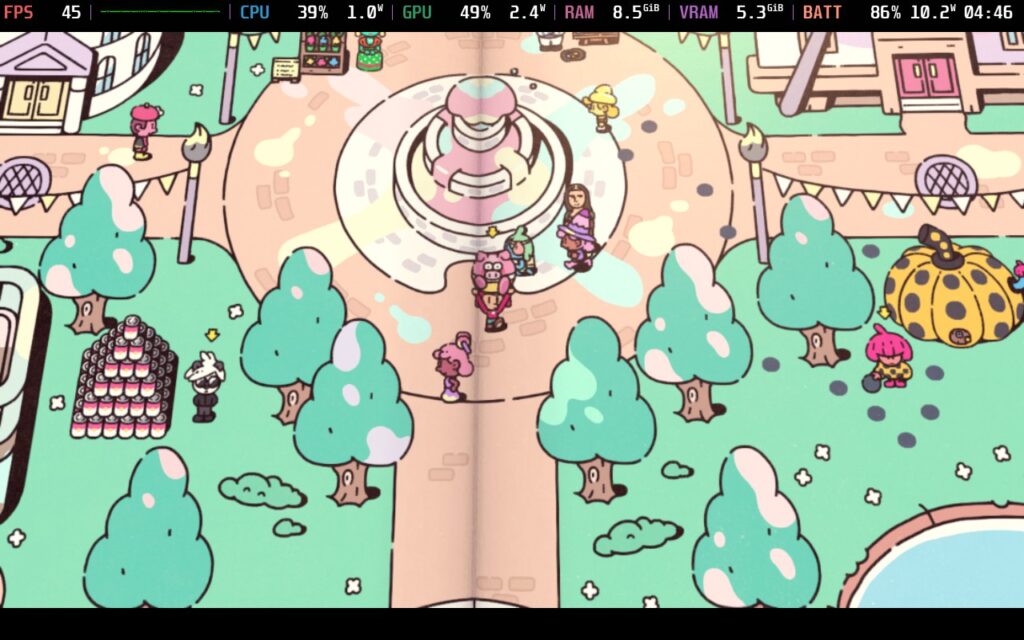
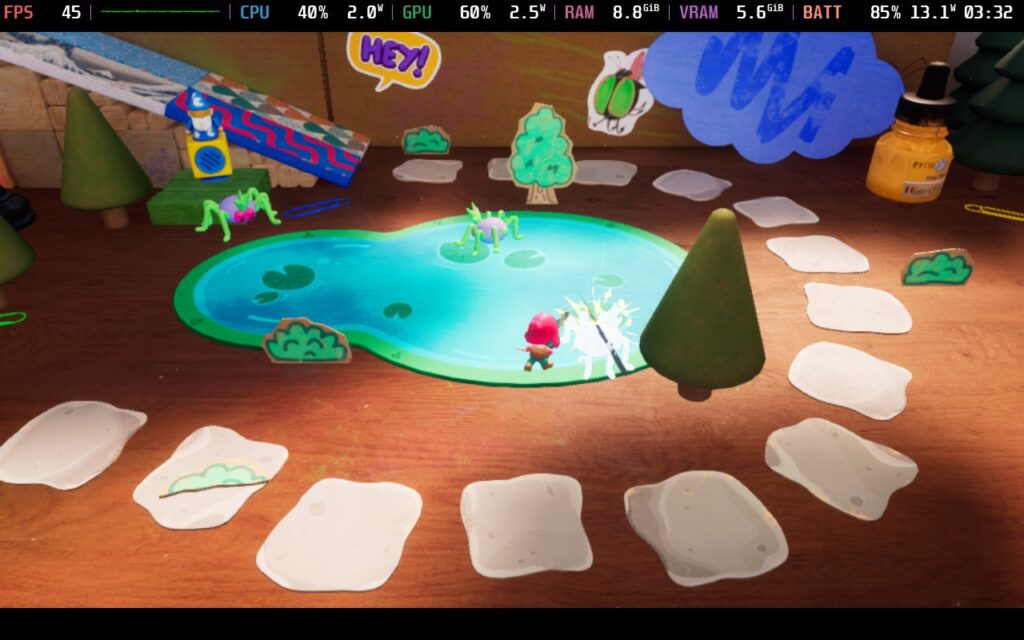
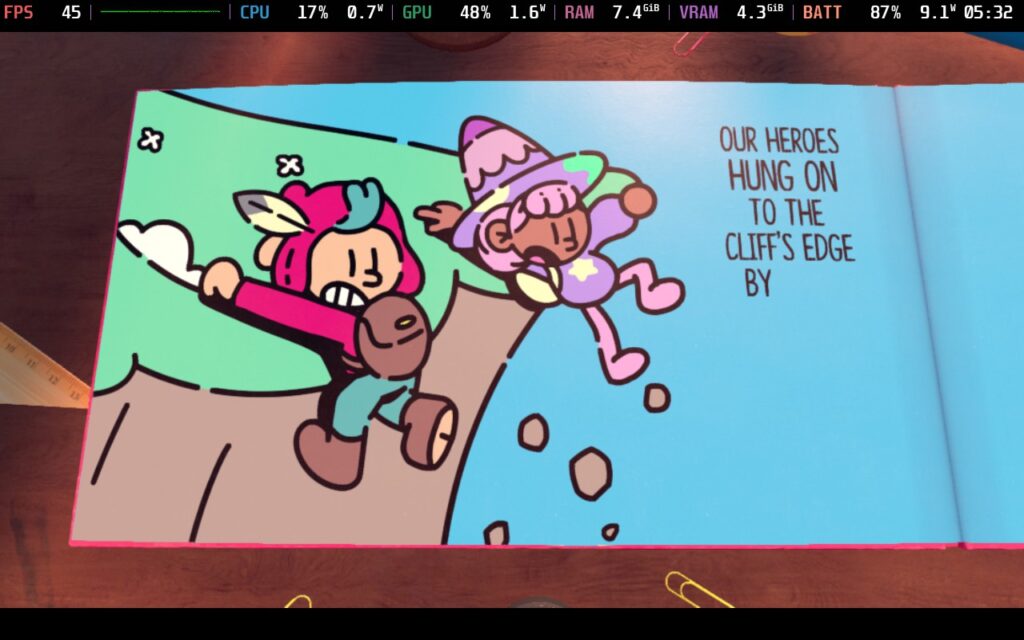
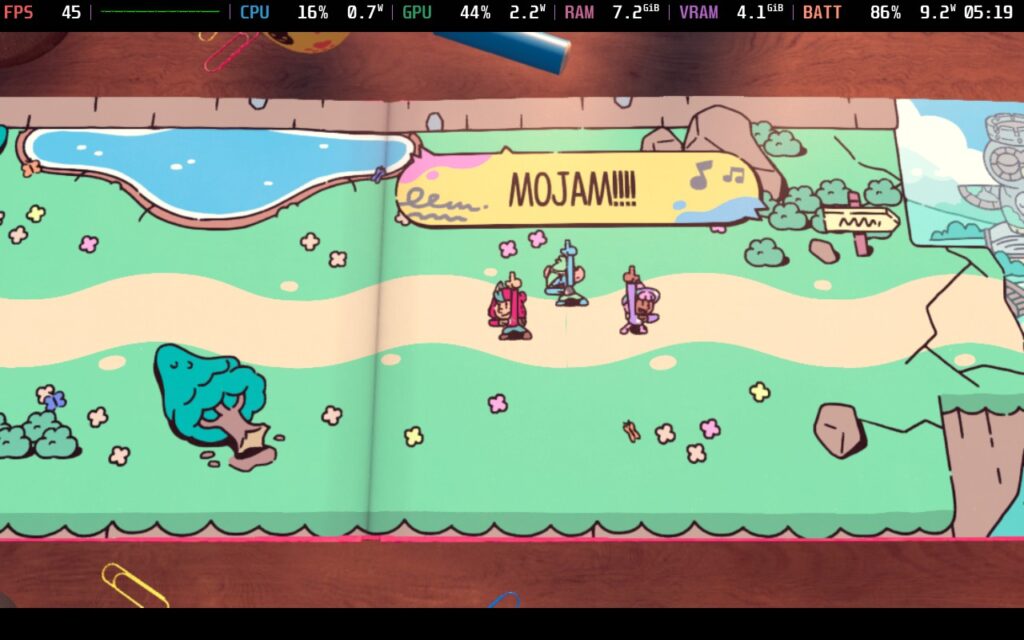
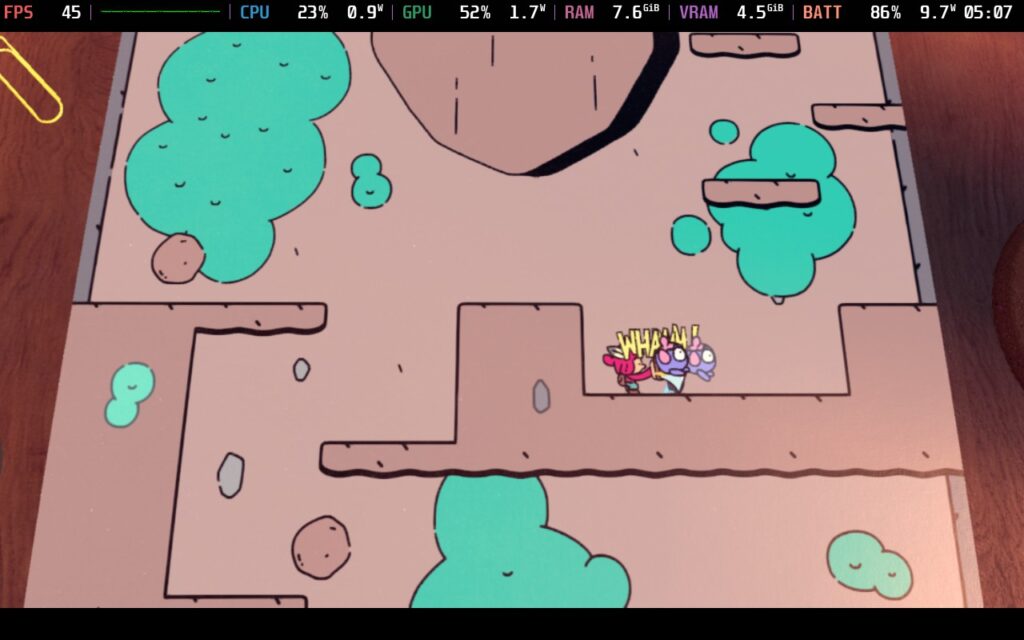
And finally, I wanted to create settings that catered to lower battery drain. I mulled over this one a bit and decided to create an individual build, even though the recommended one does stick to the lower side more than higher. With some lowered settings, and 30 FPS, we can stick below a TDP limit of 9. This is great for those who really need to maximize your battery life, though if you are going to be around an outlet, I would recommend just using one of the two groups of settings above. The experience will be much better.
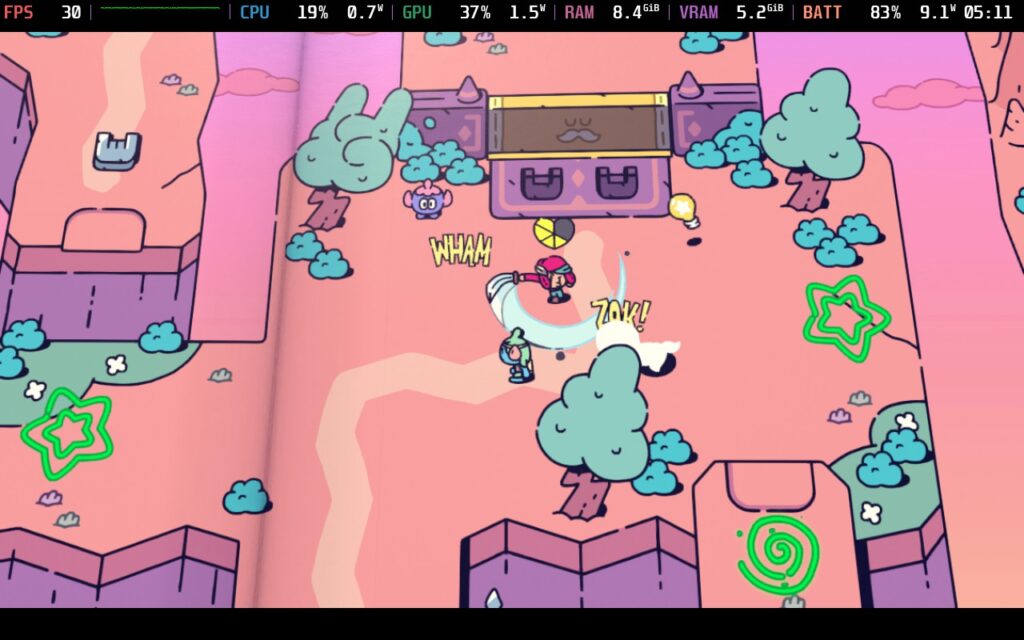

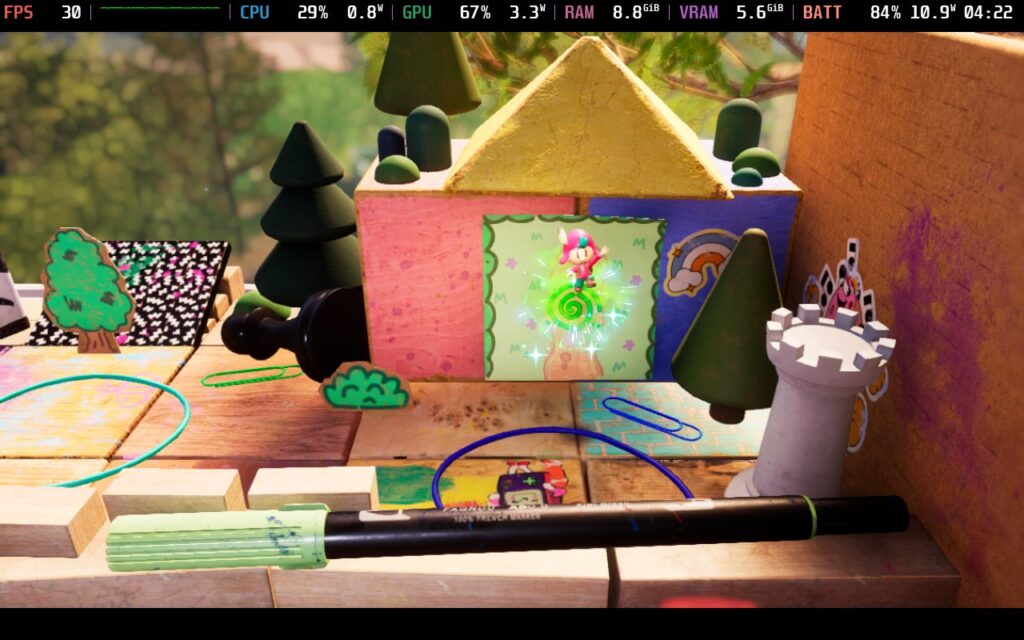
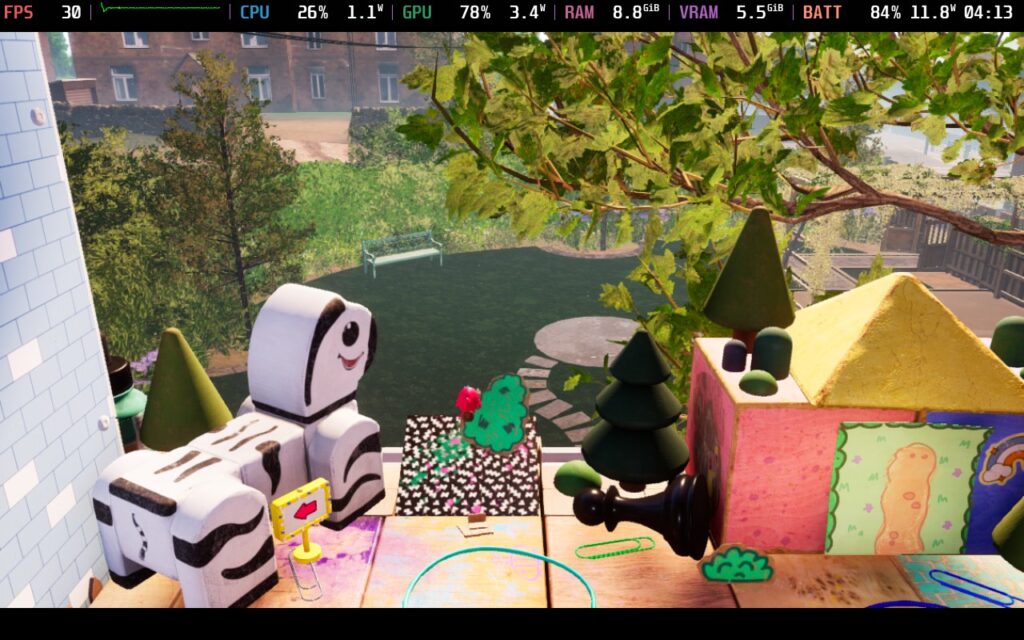
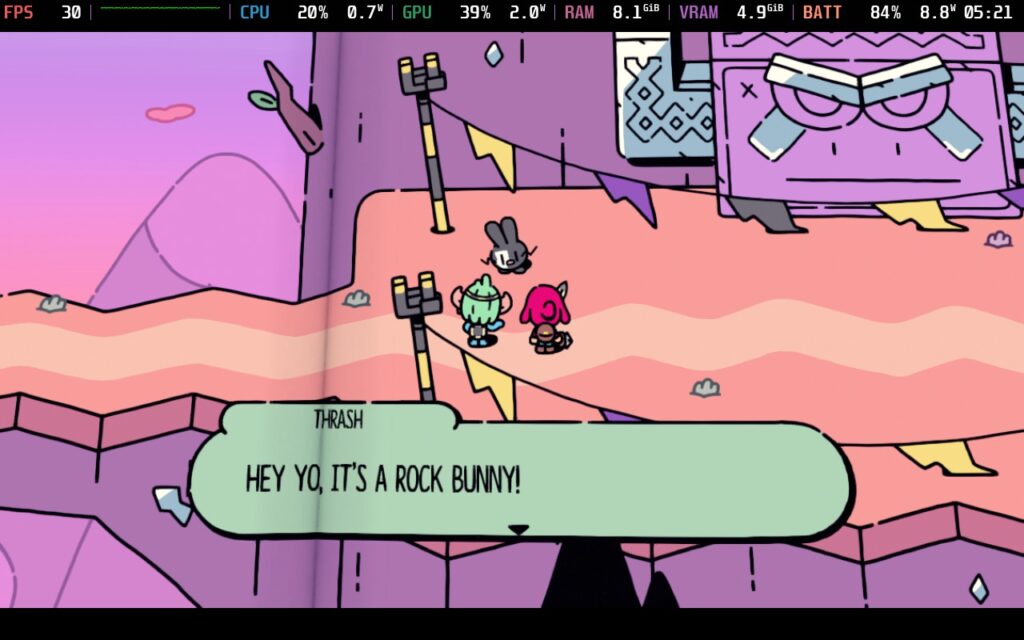
The game does have a specific accessibility tab to toggle different options. There's a jump assist, showing hidden portals, disable falling platforms, invincibility, and one-hit kills. You can also change audio sliders and rebind controls. There's also an option at the pause menu to skip some of the game's minigames.
The game doesn't support 16:10 resolutions when in game, but does in menus. We also have cloud saves and controller support. There are no HDR settings.
The Plucky Squire is a fantastic game in almost every way. The way it blends 2D and 3D worlds to create not only an interesting story, but intriguing new ways to solve puzzles is just great. The combat is pretty standard for a Zelda-esque title, and I would have loved to see a bit more progression, but for a game with a smaller scope overall, it works well. Even with some of the compromises on the Steam Deck, it's still worth playing, and I can't say that enough!
Our review is based on the PC version of this game.
If you enjoyed this review, be sure to check out the rest of the content on SteamDeckHQ! We have a wide variety of game reviews and news that are sure to help your gaming experience. Whether you're looking for news, tips and tutorials, game settings and reviews, or just want to stay up-to-date on the latest trends, we've got your back.
The Plucky Squire is a fantastic experience with a unique way to complete puzzles, and it is playable on the Steam Deck with some compromises.

Proton Experimental
Resolution Scale: 100
Textures: High
Anti Aliasing Method: TAA
Anti Aliasing Quality: Epic
Effects: High
Shadows: Epic
Post Processing: Epic
Ambient Occlusion: On
View Distance: Epic
Screen Space Reflections: Off
Limit
45
Refresh Rate
90
HRS
NO
TDP Limit
No
Scaling Filter
Linear
GPU Clock
Disabled
Proton Experimental
Resolution Scale: 85
Textures: High
Anti Aliasing Method: TAA
Anti Aliasing Quality: Medium
Effects: Low
Shadows: Medium
Post Processing: Low
Ambient Occlusion: On
View Distance: Medium
Screen Space Reflections: Off
13W - 22W
65c - 75c
~3 hours
Limit
30
Refresh Rate
90
HRS
NO
TDP Limit
9
Scaling Filter
Linear
GPU Clock
Disabled
No Forced Compatibility
Resolution Scale: 95
Textures: High
Anti Aliasing Method: TAA
Anti Aliasing Quality: Medium
Effects: Low
Shadows: Medium
Post Processing: Medium
Ambient Occlusion: On
View Distance: Medium
Screen Space Reflections: Off
8W - 13W
55c - 60c
~5 hours